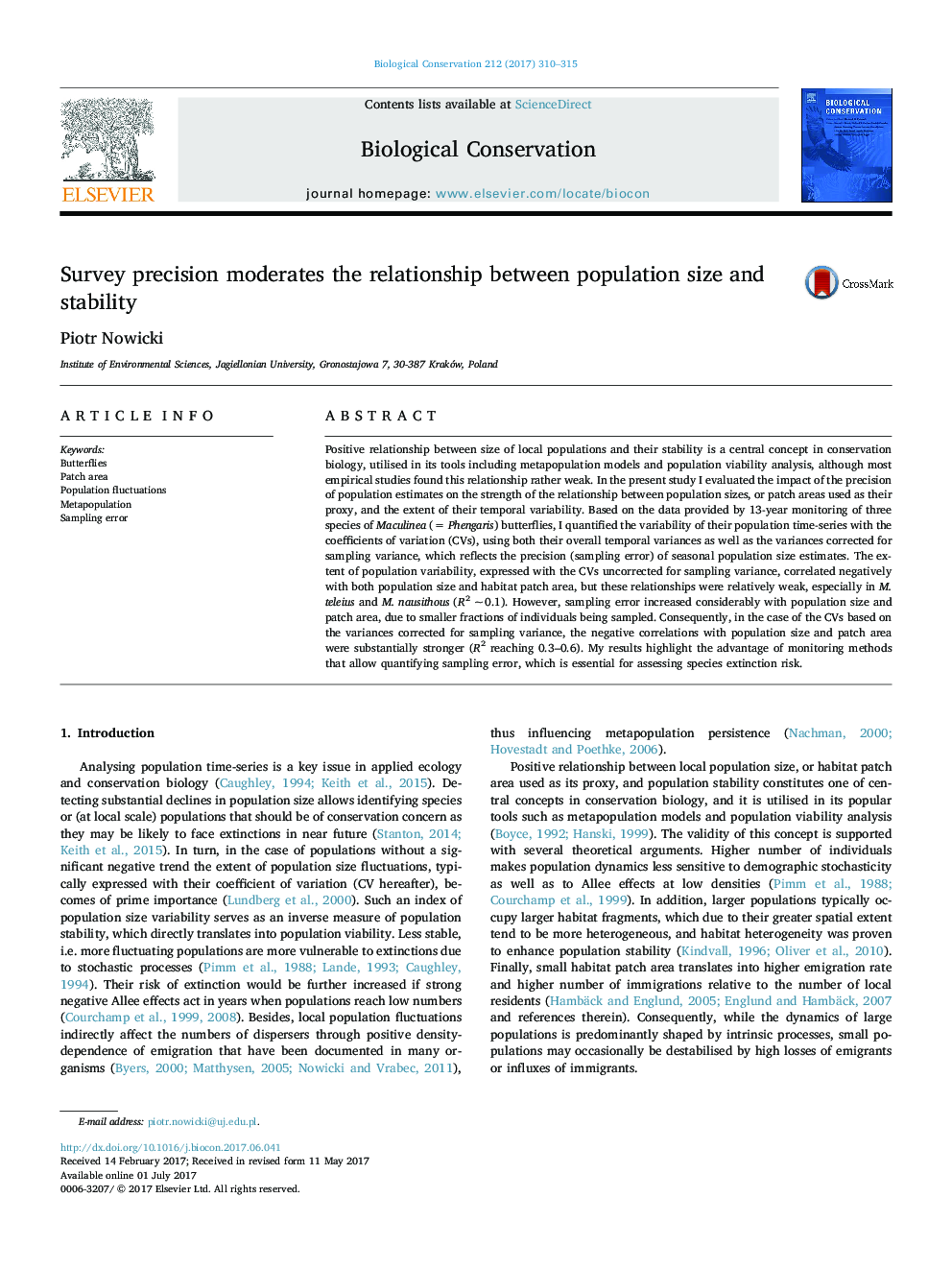| Article ID | Journal | Published Year | Pages | File Type |
|---|---|---|---|---|
| 5743113 | Biological Conservation | 2017 | 6 Pages |
Positive relationship between size of local populations and their stability is a central concept in conservation biology, utilised in its tools including metapopulation models and population viability analysis, although most empirical studies found this relationship rather weak. In the present study I evaluated the impact of the precision of population estimates on the strength of the relationship between population sizes, or patch areas used as their proxy, and the extent of their temporal variability. Based on the data provided by 13-year monitoring of three species of Maculinea (= Phengaris) butterflies, I quantified the variability of their population time-series with the coefficients of variation (CVs), using both their overall temporal variances as well as the variances corrected for sampling variance, which reflects the precision (sampling error) of seasonal population size estimates. The extent of population variability, expressed with the CVs uncorrected for sampling variance, correlated negatively with both population size and habitat patch area, but these relationships were relatively weak, especially in M. teleius and M. nausithous (R2 ~Â 0.1). However, sampling error increased considerably with population size and patch area, due to smaller fractions of individuals being sampled. Consequently, in the case of the CVs based on the variances corrected for sampling variance, the negative correlations with population size and patch area were substantially stronger (R2 reaching 0.3-0.6). My results highlight the advantage of monitoring methods that allow quantifying sampling error, which is essential for assessing species extinction risk.
